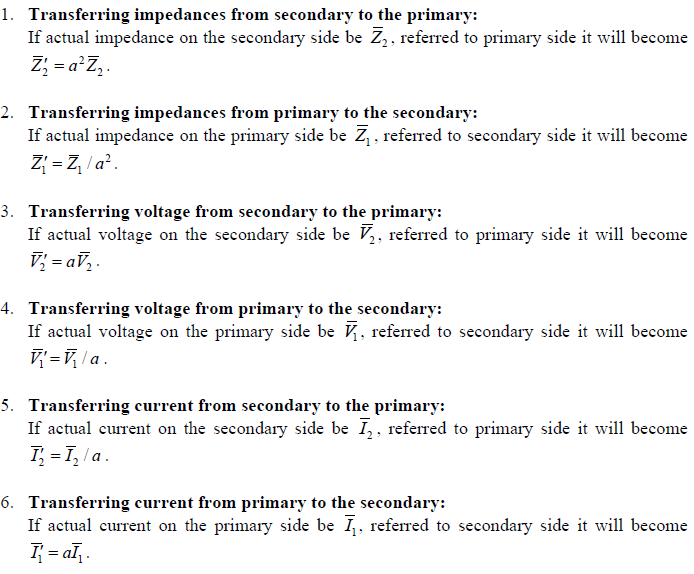Equivalent Circuit
equivalent circuit: Approximate equivalent circuit is widely used to predict the performance of a transformer such as estimating regulation and efficiency. Instead of using the equivalent circuit showing both the sides, it is always advantageous to use the equivalent circuit referred to a particular side and analyse it. Actual quantities of current and voltage of the other side then can be calculated by multiplying or dividing as the case may be with appropriate factors involving turns ratio a.
Transfer of parameters (impedances) and quantities (voltages and currents) from one side to the other should be done carefully. Suppose a transformer has turns ratio a, a = N1/N2 = V1/V2 where, N1 and N2 are respectively the primary and secondary turns and V1 and V2 are respectively the primary and secondary rated voltages. The rules for transferring parameters and quantities are summarized below.

In spite of all these, gross mistakes in calculating the transferred values can be identified by remembering the following facts.
1. A current referred to LV side, will be higher compared to its value referred to HV side.
2. A voltage referred to LV side, will be lower compared to its value referred to HV side.
3. An impedance referred to LV side, will be lower compared to its value referred to HV side.